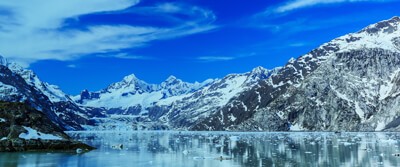Climate Change Is Heating Up Our Lakes

By Ralph Birch
For nearly a decade, a meteorological station at the Stannard Rock Lighthouse on Michigan’s Keweenaw Peninsula has been measuring evaporation rates at Lake Superior. While weather patterns can shift significantly from one year to the next, Lake Superior is showing signs indicative of long-term climate change.
Water temperatures and evaporation rates in Lake Superior are on the rise, which results in lower water levels during some seasons. This has a negative effect in a number of areas, including hydropower plants, navigation and fishing.
Typical discussions of this topic might focus on glacial melt or flooding, but the data being collected at Stannard Rock has shed light on the importance of lakes in the study of climate change. The physical, chemical and biological changes that take place in lakes year after year have brought them to the forefront of climate change research.
On a global scale, the numbers indicate that lake temperatures are on the rise, but the ecological consequences from around the world differ from those in the U.S. Lake Tanganyika in eastern Africa is warming at a slow rate, but its fish populations are dwindling quickly and leaving people without a vital food source.
Getting Warmer (and Colder)
Lakes and ponds make up approximately four percent of the Earth’s surface not already covered by glaciers. While this may seem like a small percentage, the world’s more than 100 million lakes are responsible for cycling carbon between the surface of the water and the atmosphere, giving off heat-trapping gases like carbon dioxide and methane and storing carbon amongst layers of muck in the lake bottom.
A 2015 study found that the average warming rate of the 235 lakes where scientists collected data was 0.34°C per decade between 1985 and 2009. Some lakes warmed at a much more rapid rate, while others bucked the warming trend and actually cooled over the same period of time. The lakes with similar warming rates were scattered across the globe at different latitudes and elevations and the changes in temperature varied greatly based on size and depth. Scientists couldn’t even pinpoint a clear warming trend among lakes in the same geographic location.
“Even though lakes are experiencing the same weather, they are responding in different ways,” says Stephanie Hampton, an aquatic biologist at Washington State University.
While lakes are undoubtedly an important piece of the climate change puzzle, researchers are collecting more data in hopes of reaching more definitive conclusions.
Discussion Questions
- Aside from lakes and oceans, what are some other bodies of water that would be useful for the study of climate change?
- Can you think of more water-based activities that would be affected by rising temperatures and increased evaporation rates?
- evaporation
- hydropower
- latitude

